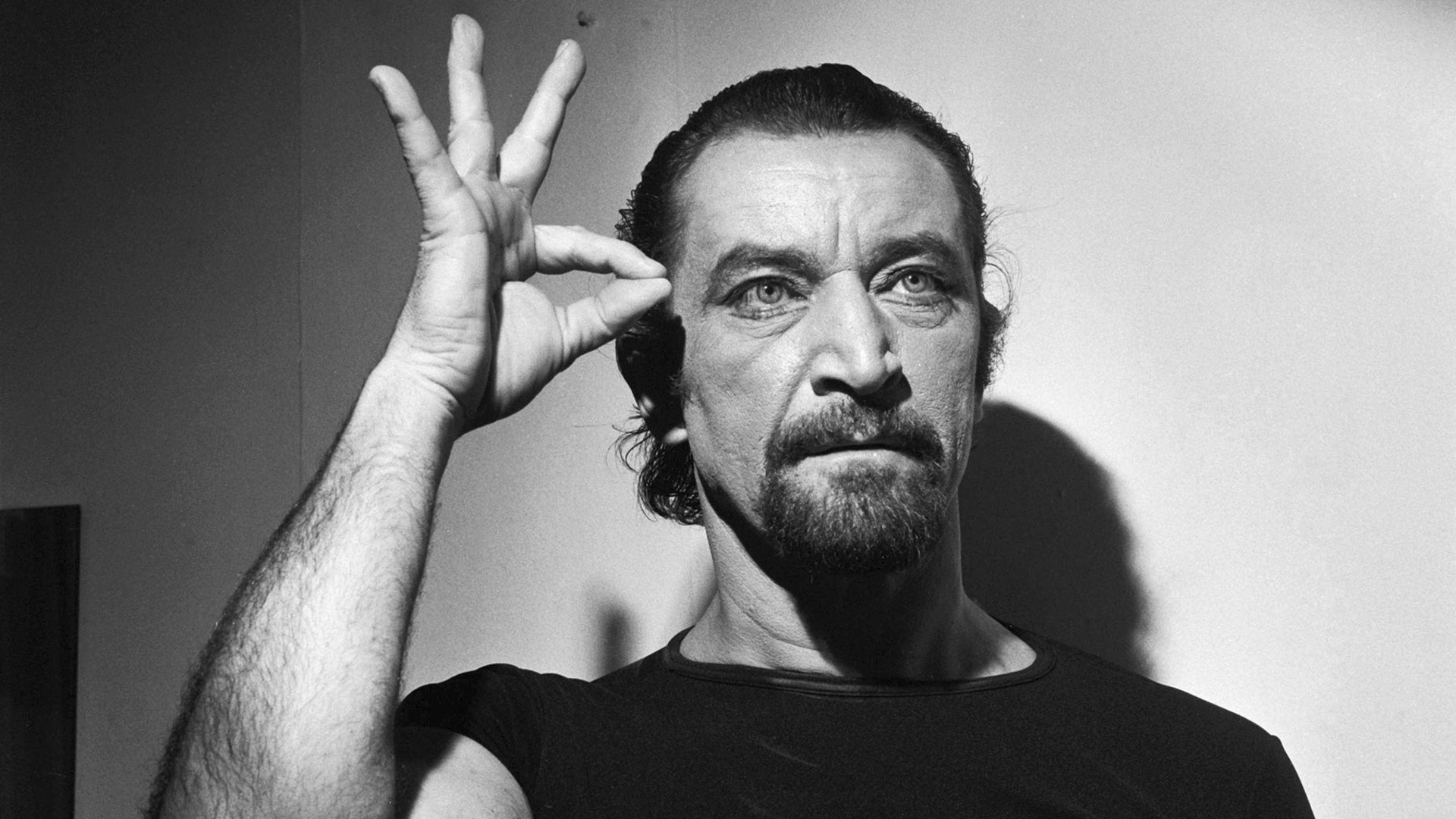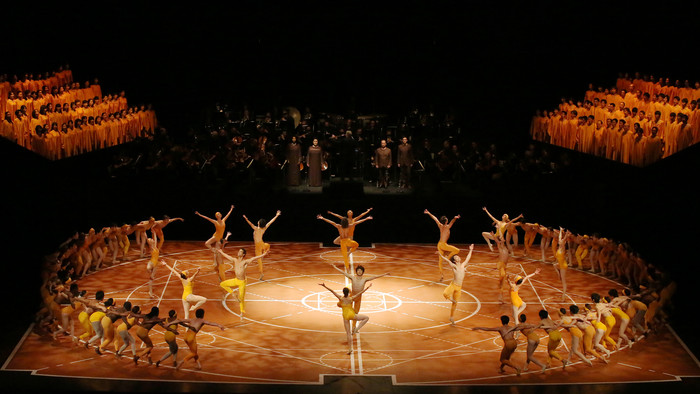Son of philosopher Gaston Berger, Maurice Béjart was born on January 1, 1927 in Marseille (France). He made his debut, first as a dancer and then as a choreographer, in Paris. In 1960, he formed his own company, the Ballet du XXe Siècle, in Brussels (Belgium). 25 years later, the troupe relocated to Lausanne (Switzerland) to be renamed Béjart Ballet Lausanne. Maurice Béjart puts down roots wherever his work takes him. It was during a tour with the Swedish Ballet Culberg (1949) that he discovered his strength for expression through choreography. Shortly afterwards, while working on a Swedish film production, he met Igor Stravinsky for the first time.
His first great triumph came in 1959, when Béjart created his monumental Sacre du printemps for Maurice Huisman, the new director of Théâtre Royal de la Monnaie in Brussels. This ballet paved the way for the launch of Ballet du XXe siècle in 1960, which triumphed on numerous worldwide tours. The Sacre du Printemps was followed by his most famous work to this day, Ravel’s Bolero, and later by Messe pour le temps présent and The Firebird. Developing a marked taste for cultural diversity, Béjart went on to create works that expressed the core of different civilizations in the form of dance (Bhakti, Golestan, Kabuki, Dibouk, Pyramide) and illustrated a rich musical repertoire extending from Wagner to Boulez.
A natural teacher, Béjart founded the Mudra School in Brussels in 1970, and then in Dakar seven years later. In 1992, the Rudra School and Workshop opened its doors in Lausanne. The transformation of Ballet du XXe siècle into Béjart Ballet Lausanne (1987) took place without interruption. In 1992, in order to rediscover the essence of interpretation, the size of the company was trimmed to about thirty dancers. This move was followed by numerous ballets created for the new troupe: Ring um den Ring, Le Mandarin Merveilleux, King Lear – Prospero, A propos de Shéhérazade, Le Presbytère… , Mutationx, La Route de la soie, The Overcoat, Enfant-Roi, Lumière, Tokyo Gesture…
As well as directing plays (La Reine verte, Casta Diva, Five Modern Nô Plays, A-6-Roc), operas (Salomé, La Traviata, Don Giovanni) and films (Bhakti, Paradoxe sur le comédien), Maurice Béjart also wrote a novel, a personal diary and a play. He was granted with the Order of the Rising Sun from Emperor Hirohito of Japan (1986) and was named Great Officer of the Order of the Crown by King Baudouin of Belgium (1988). In 1993, the Japan Art Association awarded him its prestigious Premium Imperial Prize, while soon after the Inamori Foundation gave him the Kyoto Prize (1999). In 1994, Maurice Béjart was elected a Free Member of the Académie des Beaux-Arts de l’Institut de France. On December 4, 1995, the Pope Jean-Paul II gave him the Peace Foundation award. The city of Lausanne granted him the Bourgeoisie d’Honneur on December 3, 1996. In 2001, he received the Laurent Perrier Grand Siècle award from the hands of Jeanne Moreau. In August 2002, he created a new troupe for young dancers, Compagnie M, and his new ballet Mère Teresa et les enfants du monde. It premiered in Lausanne at the Théâtre de Beaulieu on October 18.
In October 2003, he paid homage to Fellini on the tenth anniversary of his death, with Ciao Federico. He received the insignia of Commandeur des Arts et des Lettres from the Ambassador of France to Switzerland. 2004 marked the 50th anniversary of his role as director of the company. He then staged L’Art d’être grand-père together with the young dancers of the troupe. In 2005, he creates L’Amour-la Danse, a show featuring over ten scenes of his greatest ballets, and also Zarathoustra, le Chant de la Danse, his most recent major worldwide creation. In 2006, on the eve of Maurice Béjart’s eightieth birthday, he creates La Vie du danseur racontée par Zig et Puce. While working on what will be his last creation, Le Tour du Monde en 80 Minutes, Maurice Béjart passes away on November 22, 2007.

